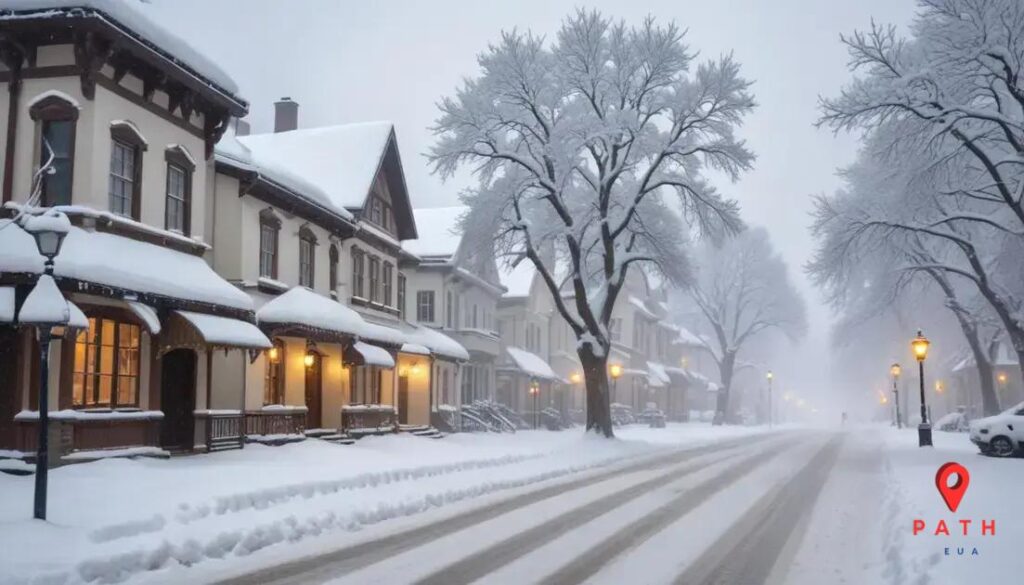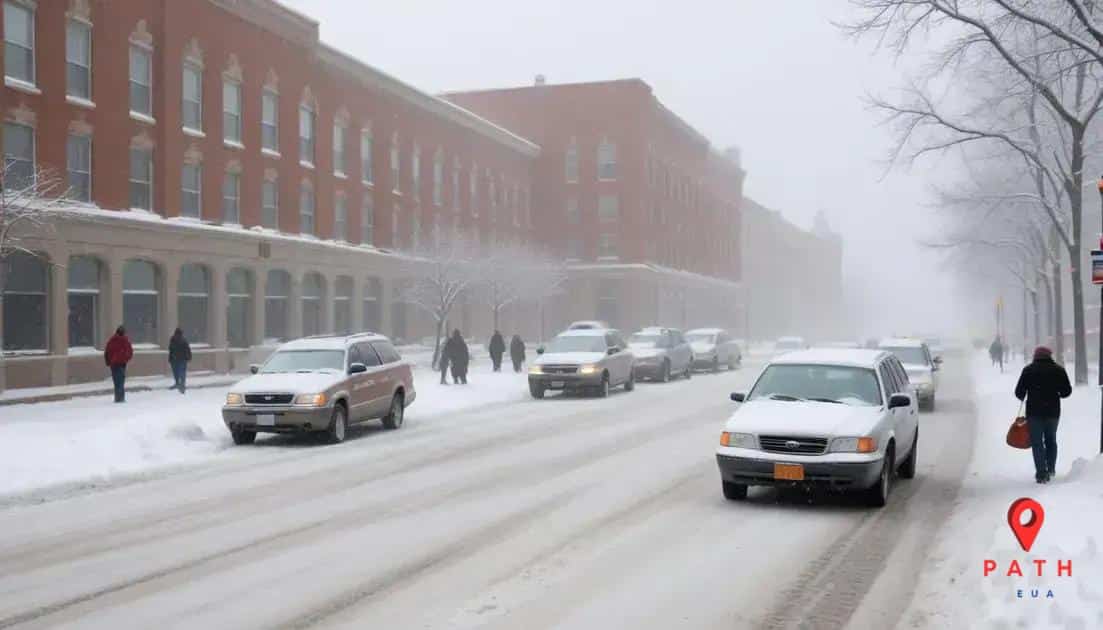US snowfall record: a fascinating winter phenomenon

Anúncios
The US snowfall record refers to the highest recorded snowfall in a specific area, impacting transportation, emergency services, and daily life significantly during winter storms.
Every winter, the US snowfall record draws attention, captivating those curious about nature’s fury and beauty. Have you wondered how much snow can truly fall?
Understanding snowfall records in the US
Understanding snowfall records in the US is important to appreciate how weather can shape the environment. Snowfall records are gathered every year, tracking the maximum amounts falling in various regions.
Anúncios
Snowfall can vary significantly across the country. While some areas might receive mere inches, others can see several feet of snow. This is generally attributed to geographic and climatic differences.
Key Factors Influencing Snowfall
Several factors affect the snowfall records:
Anúncios
- Geography: Mountains can cause orographic lifting, increasing precipitation.
- Temperature: Colder temperatures are essential for snow formation.
- Weather patterns: Systems like El Niño can significantly alter snowfall.
To learn more about snowfall patterns, visit NOAA’s official website for detailed statistics and reports.
The science behind extreme snowfall
The science behind extreme snowfall involves complex meteorological factors. Snow forms when water vapor in the atmosphere cools and crystallizes. These crystals combine to create larger snowflakes.
When conditions are right, these snowflakes can accumulate rapidly, leading to extreme snowfall events. Several factors contribute to this phenomenon.
Key Factors Leading to Extreme Snowfall
Some of the crucial elements that affect snowfall include:
- Humidity: Higher humidity levels can lead to more moisture in the air, resulting in increased snowfall.
- Temperature: Colder temperatures are necessary to keep snowflakes from melting as they fall.
- Weather Systems: Storm systems such as nor’easters can bring significant amounts of snow due to their intensity and moisture content.
For more insights into snowfall science, visit NOAA’s National Climatic Data Center for comprehensive weather data.
| Aspect | Description |
|---|---|
| What is a Record? | A snowfall record tracks the highest snow in a location. |
| Science Behind It | Humidity, cold air, and storm systems create heavy snow. |
| Impact on Communities | Snow can disrupt roads, schools, and emergency services. |
| Historical Events | Storms like 1888 and 1996 left cities buried in snow. |
| How to Prepare | Stay informed, stock supplies, and check snow equipment. |
Effects of heavy snowfall on communities

Heavy snowfall can have significant effects on communities, influencing daily life, infrastructure, and the economy. When snow accumulates, it can disrupt transportation and services in various ways.
For instance, snow-covered roads can lead to delays in emergency response times. Schools may close, affecting students and parents alike. Here are some key impacts of heavy snowfall:
Effects on Daily Life
- Transportation: Road closures and difficult driving conditions can delay public transport and commuting.
- School Activities: Snow days mean children stay home, disrupting education schedules.
- Emergency Services: Responders may take longer to reach those in need due to blocked routes.
Communities often need to implement snow removal plans quickly. This requires coordination among city services and local residents. For further information on community responses to heavy snowfall, check out FEMA’s official website.
Historical US snowfall events
Historical US snowfall events showcase the impressive power of winter weather. Some years, snowfall totals have reached record levels, creating breathtaking landscapes and memorable moments.
These events often affect large regions and lead to significant snowfall accumulation. Here are a few notable historical snowfall events:
Record Snowfall Events
- The Great Blizzard of 1888: This storm dumped over 50 inches of snow in some areas, crippling cities along the East Coast.
- The snowstorm of 1996: This massive storm left cities like Washington D.C. with over 20 inches of snow.
- The winter of 2010: Snowstorms in the Northeast led to snow accumulation exceeding 100 inches in some areas.
For more details on snowfall records through the years, visit NOAA’s National Weather Service, which provides historical data and insights.
Preparing for snowfall: tips and resources
Preparing for snowfall is essential to ensure safety and minimize disruptions. With the right strategies in place, you can stay ahead of winter weather conditions.
Here are some helpful tips and resources to get ready for heavy snowfall:
Essential Tips
- Stay Informed: Monitor local weather stations for updates on snowfall forecasts.
- Stock Up on Supplies: Have enough food, water, and essentials in case of being snowed in.
- Equipment Ready: Ensure your snow removal tools, such as shovels and snow blowers, are in good condition.
Additionally, familiarize yourself with local emergency resources. Many communities offer shelters and assistance during severe weather. For further guidance on winter preparedness, visit Ready.gov, which provides valuable information and resources.
In summary, understanding snowfall and its impacts
Paying attention to snowfall records, the science of snow, and the effects on communities can help us better prepare for winter. Knowing how to prepare for snowfall ensures safety and readiness in challenging weather conditions.
Through proper planning and access to resources, we can navigate harsh winters more smoothly. Staying informed and taking proactive steps are key to handling snowy weather effectively.
Embrace the season by preparing for snowfall and enjoying the beauty it brings.
FAQ – Frequently Asked Questions about US Snowfall Records
What is a snowfall record?
A snowfall record is the highest amount of snow that has fallen in a specific location during a particular period, usually measured in inches.
How are snowfall records measured?
Snowfall records are measured using snow gauges, which collect snow over a set period. This data is then reported by weather stations.
How can heavy snowfall affect my community?
Heavy snowfall can disrupt transportation, close schools, and delay emergency services, impacting daily life significantly in affected areas.
What should I do to prepare for a snowstorm?
To prepare for a snowstorm, stay informed about weather updates, stock essential supplies, and ensure your snow removal equipment is ready.